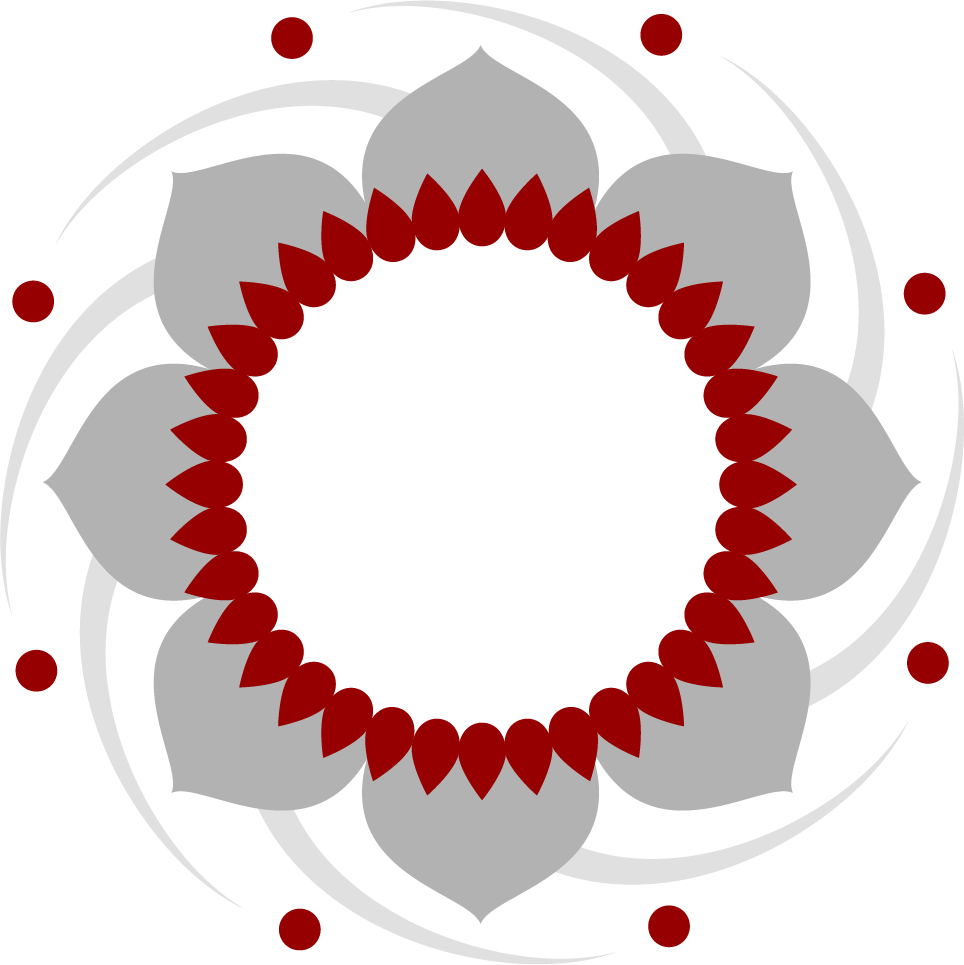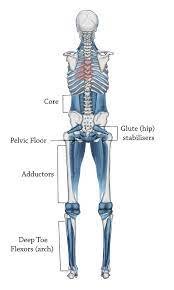Core strength you say?
Dont get me wrong, nobody really wants to be going around with a pudgy midsection.
But what I do have a problem with is everyone telling you to go off and do some core crunches all day long for the twenty one days! You know , one of those core challenges things. Back in the day everyone and even still today some people think that core strength is down to just the belly area! Basically your abs right?
Uh no - this isn’t the whole story. And I think I want to just refine this idea what is your core.
You need to look at the whole body as a whole moving system, completely integrated. Each component working in tandem with each other. Im not going to pretend im a doctor but I will try to give you a little insight into defining core better.
Like all fitness classes and probably a lot of yoga classes we heard the ‘suck your belly back’ instruction. Like a devoted fitness kitty I was I would do loads of crunches thinking this was improving my spinal stability. I mean we all did it back in the day right?
All that is really outdated now. Our core in one sense should be called the deep front line and smaller sub core systems around that. The deep front line is your foundation in the body. With smoothing functioning of the DFL the body has stability and alignment.
To move the body in a healthy direction from a place of stability and strength the deep anterior front line system need to be smoothly functioning. That means your arches, glutes, transverse abdominals, SI joint/Pelvic Floor, Oblique Chains, neck flexors, diaphragm and overall balance should all be operating smoothly. Thats a lot! But not only that this entire complex system is reflexively (automatically) coordinated by our nervous system on a moment-to-moment basis.
You could say our core is like a central channel axis that runs down the middle of the body. It tends to run deep in the body and it goes with the name ‘Deep anterior line’.
Deep front Line #1
The deep anterior line is a collection of deep tissue muscular fascia that lies deep in the front body. The muscles of this core system are at the foundation of your core.
The DFL consist of slow-twitch muscle fibers (muscles that are fatigue resistant, and focused on sustained, smaller movements and postural control) which means lots of red tissue, lots of mitochondria and lots of myoglobin. Sometimes these muscles are called type I or red fibers because of their blood supply. In other words, lots of oxygen circulating here. Its not a surprise that this system strengthens our stability and helps to increase our endurance. The Deep Front Line connects the top part of your body to the lower part of your body going from your lower deep toe flexors ie your arches to all the way up to your jaw muscles.
Thoraic Diaphragham/Breathing
Hip flexors/Psoas
Transverse Abdominals
Obliques
Tibialis Posterior
Adductors magnus, brevis, longus - inner thighs
Pectineus
Illiacus /Gluts
Sacroilliac Joint/pelvic floor
Scaleni / deep Neck flexors
Infra and Supra-Hyoids & Jaw muscles
Sub systems that work with the DFL
The buttocks and the glut Maximus muscles plays a huge part in stabilises your body but yet its not really considered part of the deep front line. But the thing about this muscle, some of the inner thigh muscles, lats, QL, obliques to name a few - they act as conduits, transferring and connecting the power of each functional sub core system together in the central DFL. For example, the multifidius which is not part of your DFL is a small muscle that runs along the entire back of your spine but plays a massive role in spinal stabilisation.
Your posture and your DFL
Your DFL runs down the middle of the body like a central axis. It connects all these sub core systems and is responsible for keeping your entire body stable and upright. The DFL holds you within the alignment of good posture. So when one area is dysfunctional or weak or just not coordinating with another system the whole posture is thrown off. Or what about your head posture? got weak neck muscles and forward head posture? When the muscles at the front of your neck get shorter and weaker then it throws off the whole central axis again.
Overall long term shortening of the muscle and fascia in the Deep Front Line pulls our chest and shoulders down – contributing to neck and shoulder tension. Which sometimes leaves people with this constant incurable neck and shoulder tension. Some thing which you are probably getting at this moment reading this !
What to do?
Most yoga teachers back in the day including myself would instruct navel back to spine because the old research was telling us it was the only thing to stabilise the spine. However with new research showing the action of drawing the navel just back to the spine tends to deactivate the outer core muscles and it doesnt really connect with the correct core muscles.
“Whatever the benefit underlying low-load transversus abdominis activation training, it is unlikely to be mechanical. There seems to be no mechanical rationale for using an abdominal hollow [a.k.a. navel to spine], or the transversus abdominis, to enhance stability.” (Grenier & McGill, 2007)
And doing more crunches won’t help. Approaching your practice from the perspective of the deep front line is whats needed. Look at what needs stabilising, releasing (dont forget this as your deep from line muscles may be contracted / tight or in spasm) and strengthening and you cant go wrong with that. In one sense one movement/ exercise won’t cover all but thats ok.
1. Release your diaphragm and breathe easier. Breathing is essential to feel better and calmer. From the perspective of the deep front line alone, dysfunctional or poor breathing will have a negative effect on the entire line and especially these – Posterior tibialis (feet), Psoas (hip flexors), Diaphragm (respiratory system) and Scalenes (neck).
Breathe into your solar plexus and side ribs. Possibly you may have to undo years of breathing incorrectly. Sometimes we need to relax more. But mainly we need to practice diaphramic breathing a lot, 5/6 days a week to start changing habits in our breathing. About 5/10 mins a day. I cant emphasis enough how dysfunctional breathing can really affect your core strength.
2. Bird dog and dead bug are great intro points into core stability. They encourage co-ordination with the legs and arms and the spine is stable. The whole body is involved.
3.Side plank and variations of Side plank are excellent for creating stability in the hips, shoulders outer obliques, lats and general side waist strength.
4. Bridge is fantastic for building tone and some strength in the glut muscles which is a core sub system of your body. All Bridge variations like one legged bridges are great but remember to keep the bottom ribs drawing in towards the spine (almost knitting the sternum to navel) and have the pelvis in a somewhat posterior tilt. This stops you bending into your lower back and gets you using your muscles all around the hips more.
5. Sometimes we think everything needs strengthening but actually no, sometimes the body needs to release and one of the major muscles in the body thats under a lot of pressure in all sports movements is the psoas. Constructive rest and all variations of constructive rest done for at least 15mins a day can be very beneficial with diaphragmc breathing . More flexible people tend to have issues here as those who sit a lot too. Its also a muscle which does not react well to stress - it tends to retract and tighten when we are under a lot of stress. And who isn’t under pressure these days?
If you get a lot of tightness in your front hip or above the hip crease or in the groin possibly the psoas might need to be looked at. Constructive rest is amazing also for just relieving excess tension and calming your nervous system.
By no means have I the best deep front line! Like most normal human beings this is all a work in progress and it can be done in steps. Just keep in mind if you decide to go on a crazy core challenge ask yourself is this serving the body? Remember this is only a tiny discussion here and there is so much more to explore and discuss in this area.
Reference - Images - Anatomy Trains. [poster images]. (2014). www.anatomytrains.com
Myers, T. (2020, May). Anatomy Trains: Myofascial Meridians for Manual and Movement Therapists, (4th ed.). 410.
https://blog.nasm.org/fitness/fast-twitch-vs-slow-twitch
https://www.theopclinic.com/op-explained/3-1-the-deep-front-line/




